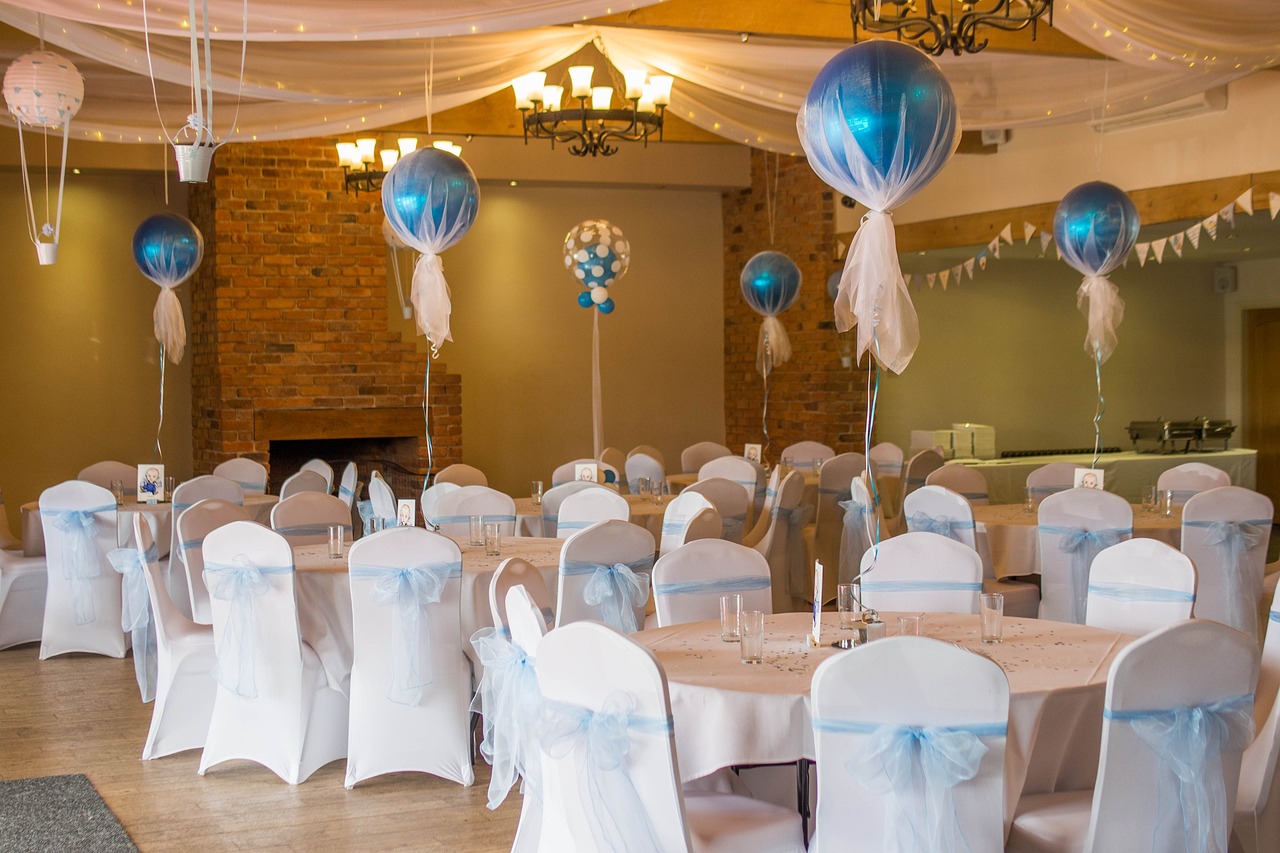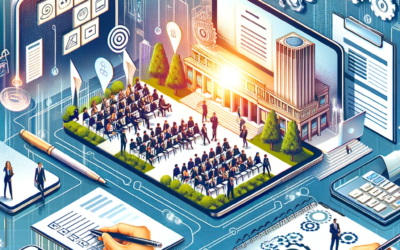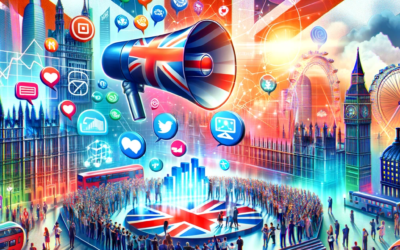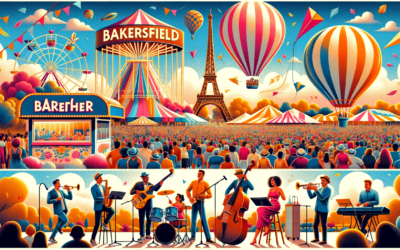Imagine walking into a space where every detail, from the lighting to the layout, from the color scheme to the interactive technologies, is curated not just to please your senses but to create an experience that lingers long after the event concludes. This is the essence of exceptional event design, a discipline that combines art, psychology, and strategy to craft moments that connect, celebrate, and communicate. As we delve into the significance of event design, we’re not merely talking about the superficial or the decorative. We are exploring a multifaceted approach that aligns aesthetics with the objectives of an event to deliver not just a message but an enduring impression. In the United States, where diversity of thought, culture, and expression thrives, event design becomes a powerful tool to manifest these myriad ideas into tangible, impactful experiences.
When we speak of event design, we often conjure images of lavish weddings or grand corporate galas. However, its significance runs deeper. It’s about understanding the audience, embracing the ethos of the occasion, and harnessing the transformative power of design to construct environments that inspire and engage. As we navigate through the tenets of effective event design, we invite you on a journey—a behind-the-scenes look at the meticulous planning, the thoughtful selection of sensory elements, and the strategic execution that culminates in the extraordinary. This is event design in the United States: a synergy of aesthetics that work, that speak, that perform.
The Psychology Behind Event Design: How Aesthetics Influence Perception
Facts: Studies show that individuals form a first impression within the first 50 milliseconds of exposure to an environment or visual stimulus. In the context of event design, this underscores the importance of immediate visual impact. Psychological research also indicates that environments can significantly influence mood and behavior, which is a critical consideration for event designers aiming to create a specific ambiance.
Let’s delve into the psychology that underpins event design. This is where each element is not merely a piece of decor but a deliberate choice that taps into the attendees’ psyche, steering their perceptions, emotions, and interactions. It’s the art of using design to evoke a desired emotional response, to tell a story, and to build a connection between the event’s purpose and its participants. The mastery of this psychological play is what makes event design in the United States not just a service, but an experience in its own right.
In the realm of event design, understanding and leveraging psychological principles is paramount. When we enter an event space, our sensory channels are immediately engaged. The colors, textures, spatial arrangements, and even the density of the crowd all work together to elicit an almost instantaneous emotional and cognitive response. Event designers must therefore be adept at predicting and influencing these responses to align with the goals of the event.
The use of color, for example, is not chosen haphazardly. There is a wealth of psychological research suggesting that colors can affect mood and behavior. Blue might be used to evoke a sense of calm and professionalism at a corporate event, while vibrant colors like red could be employed to energize and excite attendees at a product launch. Similarly, the furnishings and their arrangement are not just practicalities but are carefully planned to encourage interaction or direct focus where needed.
Furthermore, the sequence in which these elements are encountered also plays a role in shaping the event narrative. A well-designed entryway sets the stage for the experience to come, offering a visual and emotional preview of the event. The journey through the space is choreographed, with each area purposefully constructed to contribute to the overall story. Event design, in this light, becomes an intricate dance of stimuli that guides the attendee through a carefully orchestrated, psychological experience.
In essence, the psychology of event design is about creating environments that reflect and enhance the intended essence of the event. When done effectively, it results in a seamless and intuitive experience where every element feels natural, yet each is the result of meticulous planning and understanding of human psychology.
Color Theory in Event Design: Choosing Palettes that Evoke Emotion
Facts: Color theory is a fundamental aspect of visual design, and its application in events can significantly influence attendee perception. For instance, a University of Toronto study found that people consistently preferred palettes with a dominant color rather than a more complex mix. This preference for simplicity can be a key consideration in event design, where the right color choice can tie an event’s elements together and evoke the intended emotional response.
Event design thrives on the power of color to transform spaces and moods. When choosing a palette for an event, designers must consider several factors, including the theme of the event, the venue’s existing aesthetics, and the psychological impact of colors. This is not simply a matter of taste but of strategic decision-making. Colors have the ability to act as silent storytellers, conveying messages and setting tones that resonate on a subconscious level with the attendees.
The selection of a color palette is often one of the first steps in the event design process. It sets a tone that can be carried throughout every detail, from the invitations to the decor, and even to the lighting. Take, for example, the classic black and white palette: it can communicate elegance and timelessness, often used for galas and formal events. On the other hand, a palette of earth tones may be selected for events aiming to create a warm, organic, and welcoming atmosphere.
Designers must also be mindful of cultural associations with color. In the United States, where events often host a culturally diverse audience, the interpretation of colors can vary significantly. What is considered celebratory and auspicious in one culture may not hold the same connotations in another. This cultural sensitivity is a critical aspect of event design that ensures inclusivity and respect.
The palette chosen becomes the canvas upon which the event’s story is painted. It is a critical tool in the event designer’s kit, one that requires a deep understanding of color psychology, cultural nuances, and thematic appropriateness to effectively captivate and engage attendees.
Space Utilization: Crafting Functional Aesthetics in Event Layouts
Facts: Effective space utilization is a cornerstone of successful event design. According to industry insights, the layout of a venue can affect traffic flow by as much as 30%, and poor space planning can lead to a drop in attendee satisfaction. Functionality blended with aesthetics is therefore not just a desire but a necessity in event design.
When entering an event, the way space is utilized can communicate a lot about the event’s purpose and identity. For instance, a charity gala might employ round tables to foster a sense of community and encourage conversation, while a tech conference might feature individual seating facing a stage to focus attention on presentations. The layout of the space must cater to the practicalities of the event while also contributing to the overall aesthetic appeal.
Designers are tasked with balancing the visual components with the functional aspects of the event. This means considering the flow of traffic, the accessibility of facilities, and the comfort of guests. Every choice, from the width of the aisles to the placement of the stage, has to be made with these considerations in mind. The challenge lies in creating a layout that looks effortless yet serves the practical needs of the event flawlessly.
Moreover, space utilization is also about versatility. Designers must often work with spaces that are transformed to suit a wide range of events. This requires a keen eye for potential and the ability to reimagine a space for its current purpose. It’s about creating a sense of place within a place, where every element is harmonious and serves the event’s theme and objectives.
In conclusion, space utilization in event design is as much about the practicalities of movement and comfort as it is about the creation of an immersive environment. It’s a skill that requires a delicate balance between form and function, where the functional needs of the event are met without compromising on aesthetic value.
Lighting Mastery: The Subtle Art of Setting the Mood in Event Design
Facts: Lighting plays a pivotal role in event design, with studies indicating that it not only affects visibility but also mood and perception. Research has shown that lighting can influence the amount of time attendees spend at an event, and dynamic lighting can increase engagement levels by up to 20%.
The manipulation of light is one of the most powerful tools in an event designer’s arsenal. It is lighting that can instantly change the atmosphere of a space, highlight architectural features, and direct attention to focal points. The key to successful lighting design is to complement the event’s theme and time of day while also providing functional illumination.
Whether it’s the warm glow of ambient lighting for an intimate dinner or the stark, contrasting lights of a product launch, lighting sets the stage for the experience. It has the ability to transform the ordinary into the extraordinary, often with just the flick of a switch. Designers must consider the color temperature of lights, the angles of illumination, and the movement of lights throughout the event to create a dynamic and engaging environment.
Additionally, lighting can be used to guide the emotional journey of the attendees. Soft, warm lighting can make a large space feel more intimate and inviting, while cool, bright lights can energize and awaken a room. The use of intelligent lighting systems allows for the atmosphere to change at different points during an event, keeping the experience fresh and aligned with the evolving narrative of the occasion.
In summary, lighting is much more than a functional necessity. It is an element of design that requires technical knowledge, a creative eye, and an understanding of how light affects human emotion and behavior. Mastery of this subtle art is essential in creating an event design that captivates and delights.
Technology Integration: Enhancing Experiences through Innovative Event Design
Facts: The integration of technology into event design is not just a trend but a staple in modern events. For example, augmented reality (AR) and virtual reality (VR) experiences at events have been noted to increase attendee engagement by up to 33%. Moreover, the use of event apps can lead to a 20% increase in attendee satisfaction as they facilitate better networking and schedule management.
Technology has revolutionized event design, transforming passive audiences into active participants. It is no longer just about projecting images onto a screen; it is about creating interactive environments that engage the senses in novel ways. For event designers, the challenge is to seamlessly integrate technology in a way that enhances rather than overshadows the event narrative.
From immersive AR and VR experiences to live social media walls, and from sophisticated sound systems to interactive mobile apps, technology is employed to enrich the attendee experience. These tech integrations must be thoughtfully applied to serve the event’s goals, whether it’s to educate, entertain, or facilitate networking. It’s about using technology to create a cohesive experience that aligns with the aesthetics and purpose of the event.
Furthermore, technology can serve as a powerful tool in personalizing the event experience for attendees. Data-driven insights can help tailor the event design to match attendee preferences, making the experience feel more individualized and engaging. However, the integration must be intuitive and user-friendly, ensuring that it adds value without creating barriers for less tech-savvy participants.
In essence, the role of technology in event design is to create a bridge between the physical and digital worlds, enhancing the reality of the event and offering new ways to engage and amaze attendees. When executed well, technology becomes an invisible yet integral part of the event design, enchanting attendees with experiences that are both cutting-edge and deeply personal.
Sustainability in Event Design: Eco-friendly Practices that Impress
Facts: Sustainability is a pressing concern across industries, and the event sector is no exception. Eco-friendly event practices not only resonate with environmentally conscious attendees but also offer cost-saving opportunities. Studies have shown that sustainable event practices can reduce waste by up to 60% and energy consumption by as much as 20%.
The rise of eco-consciousness has brought sustainability to the forefront of event design. It’s about creating designs that are as beautiful as they are responsible. This requires a holistic approach that considers the environmental impact of every element, from the materials used in displays to the source of the food served to guests.
Event designers are turning to sustainable materials such as bamboo, recycled plastics, and digital alternatives to paper. They are also embracing practices like sourcing local products to reduce the carbon footprint and choosing venues that prioritize energy efficiency. The aesthetics of sustainability do not detract from the event’s design but instead, add a narrative of environmental stewardship and innovation.
Moreover, sustainable event design is not just about reducing negative impacts but also about educating and inspiring attendees. By incorporating eco-friendly practices, designers have the opportunity to raise awareness and demonstrate the possibilities of sustainability. This can foster a sense of community and shared purpose, enhancing the overall experience.
In conclusion, sustainability in event design is a testament to the industry’s adaptability and commitment to the future. It requires creativity, resourcefulness, and a deep understanding of environmental issues. When approached thoughtfully, sustainable design does not limit the aesthetic potential of an event; rather, it enriches it, leaving attendees both impressed and inspired.
Cultural Sensitivity: Event Design that Respects and Celebrates Diversity
Facts: Cultural sensitivity in event design has become increasingly important as events become more global. For example, a survey by Meetings & Conventions magazine found that 44% of event planners consider cultural diversity as a critical factor in the success of their events. Additionally, incorporating culturally sensitive elements can increase attendee satisfaction by creating a more inclusive atmosphere.
Cultural sensitivity in event design is about creating spaces that are not only inclusive but celebratory of diversity. In a country as diverse as the United States, this involves a nuanced understanding of different cultural norms, symbols, and traditions. Event designers must do their due diligence to ensure that the elements used within an event are respectful and appropriate.
The goal is to create an environment where all attendees, regardless of their background, feel represented and comfortable. This could mean incorporating a variety of cuisines to cater to different dietary requirements, offering multilingual support for speakers and signage, or thoughtfully acknowledging significant cultural dates and holidays within the event’s programming.
Designers must also be aware of how different cultures perceive space and interact within it. For example, some cultures place a high value on communal spaces that encourage group interactions, while others may prefer more private, intimate settings. Navigating these subtleties requires a collaborative approach, often involving consultants or cultural liaisons to ensure authenticity and respect in the design.
In sum, cultural sensitivity in event design is not just about avoiding missteps; it’s about embracing the multitude of perspectives that attendees bring to the table. When done well, it transforms an event from being just an occasion into a shared experience that celebrates the rich tapestry of human culture.
Branding through Design: Creating a Cohesive and Memorable Event Identity
Facts: The role of branding in event design cannot be overstated. Statistics from the Event Marketing Institute indicate that consistent brand presentation across all platforms, including events, increases revenue by up to 23%. Events provide a unique opportunity to immerse attendees in a brand’s world, creating lasting impressions that extend beyond traditional marketing.
Branding through event design is about embodying a brand’s essence in every visual and experiential aspect of an event. This goes beyond logos and color schemes—it’s about creating a comprehensive sensory identity that attendees can experience firsthand. The design of the event becomes a three-dimensional representation of the brand, telling its story through every touchpoint.
Every element, from the choice of venue to the style of the name badges, contributes to the branding narrative. Consistency is key; there should be a common thread that ties all aspects of the event together, reflecting the brand’s values and aesthetic. For instance, a tech company might employ a modern, sleek design with interactive tech displays to reinforce its brand identity as an innovator in the industry.
Event designers work closely with brand managers to ensure that the brand’s voice is not just heard but felt. It’s about translating brand values into physical spaces and interactions. When attendees leave, the memory of the brand stays with them, not just as a logo or a product, but as an experience that resonates on an emotional level.
To conclude, branding through design is a critical aspect of event planning that requires a strategic approach. It’s about ensuring that every element of an event is infused with the brand’s identity, creating a cohesive and immersive experience that will leave a lasting impact on attendees.
The Impact of Scents and Sounds in Event Design Aesthetics
Facts: The sensory impact of an event can profoundly influence attendees’ perceptions and memories. Studies have shown that scents can increase the memorability of an event by 100%, and the appropriate use of sound can enhance the overall attendee experience by up to 38%.
Scents and sounds are powerful, yet often underutilized aspects of event design aesthetics. The strategic use of scents can evoke certain emotions or memories, thereby aligning the mood of the event with the desired attendee experience. For instance, a subtle hint of lemon or fresh-cut grass can energize attendees upon arrival, while vanilla or lavender can be used in lounge areas to create a calming oasis within a bustling event.
When it comes to sound, the choice of music, the volume, and even the selection of a live band versus a DJ can greatly impact the energy and flow of an event. Beyond music, soundscapes or thematic audio can be employed to immerse attendees fully into the environment, whether it’s the soothing sounds of nature for a wellness retreat or the bustling street sounds of a cityscape for an urban product launch.
Event designers must carefully curate scents and sounds that complement rather than overpower the event theme. This curation involves understanding the psychology behind sensory experiences and how they can be orchestrated to enhance the overall aesthetic of the event. This might include working with scent marketers or audiovisual experts to create a custom experience that is subtle, yet impactful.
In summary, scents and sounds are crucial in creating a multi-sensory event environment that will engage attendees on a deeper level. They are elements that must be woven into the fabric of the event design, enhancing and elevating the attendee experience in a way that is both artful and strategic.
Measuring Success: How Effective Event Design Translates to Event Success
Facts: The success of event design is quantifiable. Post-event surveys often reveal that design elements can account for up to 75% of an attendee’s overall satisfaction. Additionally, a well-designed event can lead to a 30% higher return rate for future events.
Effective event design is essential for event success, and measuring this success is crucial for continuous improvement. Event designers and planners often use key performance indicators (KPIs) such as attendee satisfaction, engagement levels, and social media coverage to evaluate the success of their designs. For example, high levels of attendee interaction with designed spaces or features can indicate a successful implementation of design principles.
The effectiveness of event design is also measured through more subtle indicators such as the flow of traffic throughout the event space, the amount of time attendees spend engaged with the content or installations, and their overall emotional response. These metrics are gathered through direct feedback, observation, and sometimes through advanced analytics, such as heat maps generated by attendee movement.
Moreover, the success of an event design can extend beyond the immediate reactions of attendees. It can influence the long-term perception of the brand or organization behind the event. A design that effectively communicates the brand message and leaves a lasting impression can translate into increased brand loyalty and customer engagement well after the event has concluded.
In closing, the measurement of event design success is multifaceted and extends beyond mere aesthetics. It encompasses attendee satisfaction, engagement, brand perception, and return on investment. The ability to quantify the impact of design choices is invaluable for event professionals seeking to create not just events, but memorable experiences that resonate with their audiences.
In conclusion, the ten comprehensive points we have explored provide a deep dive into the significance of Event Design within the United States. From understanding the psychological impact of color to the meticulous integration of technology, the role of event design is pivotal in creating memorable and effective events. The insights shared here aim to inspire and guide those in the industry to craft experiences that are not only visually stunning but also resonant and meaningful. Event Design, when executed with expertise and creativity, has the power to transform simple gatherings into landmark occasions that leave a lasting impact on all who attend.
We welcome any suggestions or questions. You can email us or contact us using the contact page.
You can also connect with us on the following social networks:









0 Comments